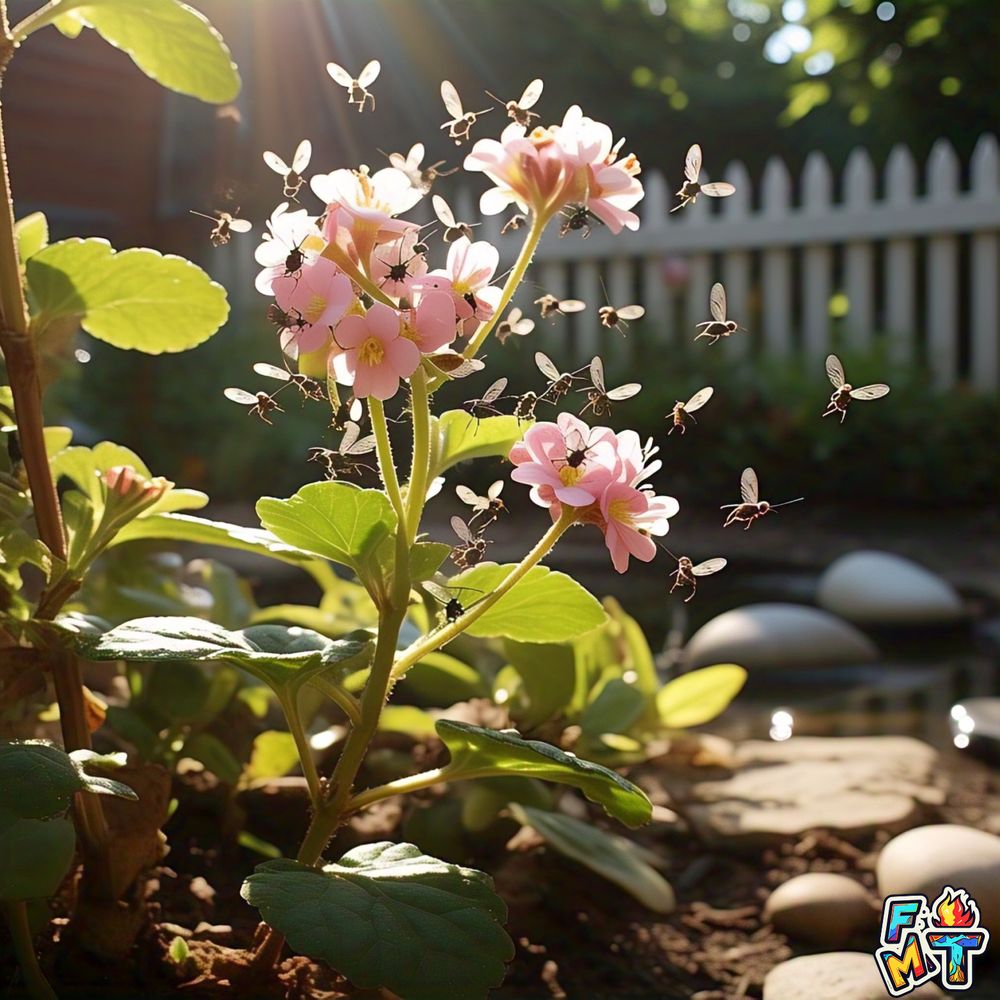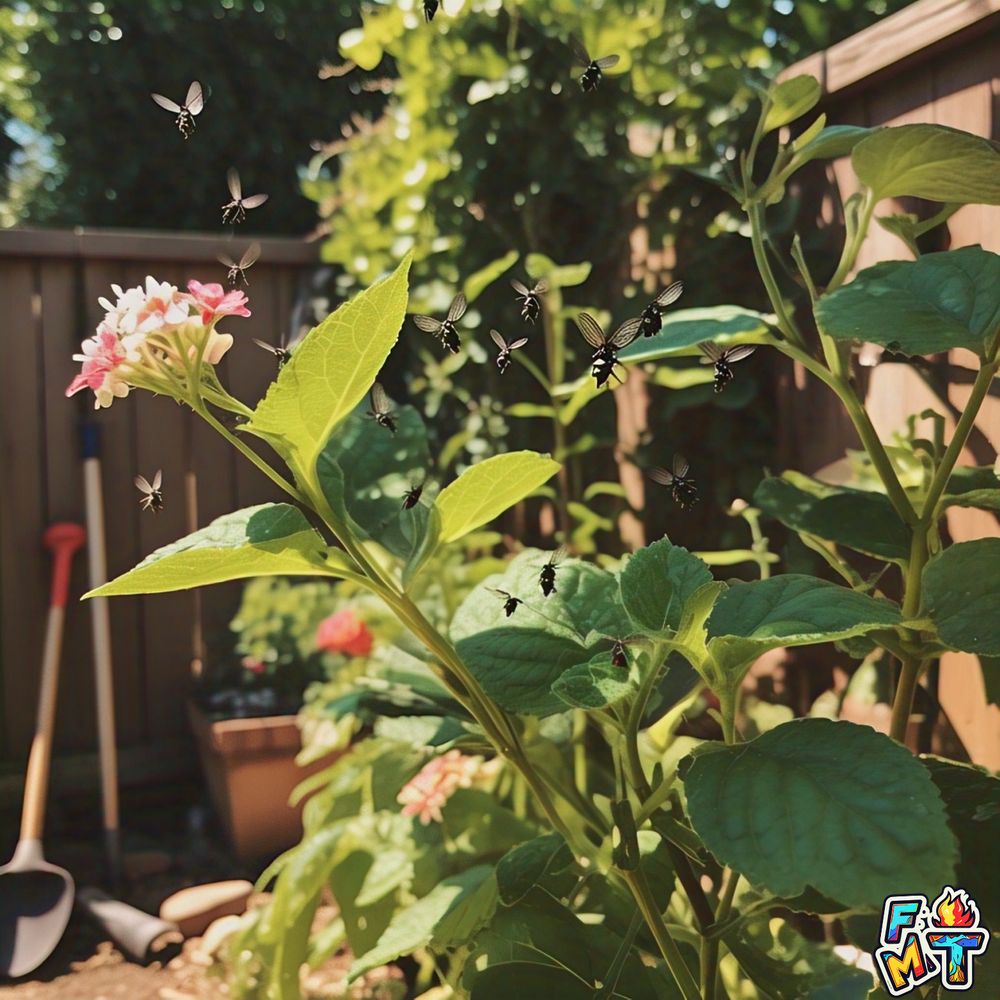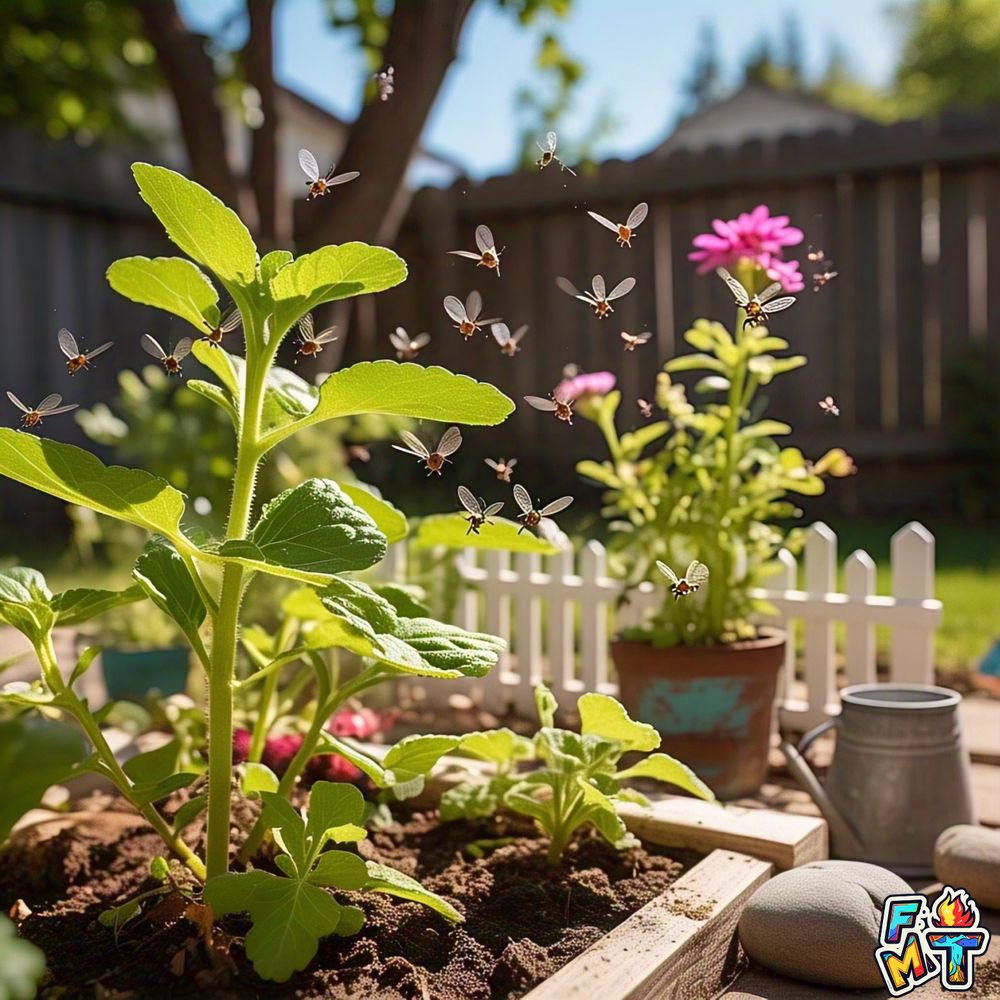Blog
How To Get Rid Of Gnats In Plants?
How To Get Rid Of Gnats In Plants: A Complete Guide
II. Understanding Gnats in Plants
A. What Are Gnats?
Gnats are small, flying insects often found near plants, particularly in the soil and around houseplants. They can be a nuisance, especially if you notice them hovering over your plants. These pests are commonly mistaken for fruit flies, but they target plant roots, causing damage to your greenery.
There are several species of gnats that could potentially infest your plants, with fungus gnats being the most common in indoor gardening environments.
B. Common Types of Gnats Affecting Plants
- Fungus Gnats
Fungus gnats are the most common type of gnat to infest houseplants. They are attracted to moist, damp soil and decaying organic matter. The adult gnats lay eggs in the soil, and the larvae feed on plant roots. This can cause wilting, yellowing leaves, and stunted growth in your plants.
- Other Gnat Species
While fungus gnats are the primary concern, other types of gnats can also affect plants, such as root gnats and drain flies. Their larvae can damage roots and create an unhealthy environment for plants.
C. Life Cycle of Gnats
Understanding the life cycle of gnats is essential in effectively managing and eradicating them.
- Egg Stage: Adult gnats lay their eggs in the moist soil, where they hatch into larvae.
- Larval Stage: The larvae feed on decaying organic matter and plant roots, causing damage.
- Pupal Stage: After feeding, larvae enter the pupal stage, where they transform into adult gnats.
- Adult Stage: The fully grown adult gnats emerge from the soil and begin the cycle again.
III. Identifying Gnat Infestations
A. Signs of Gnat Presence
It’s important to recognize the early signs of a gnat infestation to address the problem promptly.
- Visible Adult Gnats
If you notice tiny, dark flying insects around your plants, these are likely fungus gnats. They often hover near the soil or fly around the plant’s surface. - Wilting or Yellowing Leaves
Gnats can damage plant roots, leading to reduced water uptake and causing leaves to wilt or turn yellow. If you see this, it could be an indication of a gnat problem. - Root Damage Symptoms
The larvae feed on plant roots, so signs of root damage may include stunted growth, poor water absorption, and unhealthy roots.
B. Differentiating Between Fungus Gnats and Other Pests
Fungus gnats are often confused with other pests such as fruit flies or aphids. However, fungus gnats are particularly associated with moist, damp environments like potted plants. Their larvae feed on organic matter and roots, unlike other pests that might target leaves or flowers.

IV. Causes of Gnat Infestations in Plants
A. Overwatering
One of the primary causes of gnat infestations is overwatering. Excess moisture in the soil creates the ideal breeding environment for gnats.
B. Poor Soil Drainage
If your plant pots lack proper drainage, water tends to pool at the bottom of the pot, creating a damp environment that attracts gnats.
C. Use of Contaminated Soil or Compost
Using soil or compost that contains eggs or larvae can introduce gnats into your plants. Always use fresh, sterile potting mix to avoid this issue.
D. High Humidity Levels
Gnats thrive in high humidity, so if your indoor environment is too humid, it can create an ideal habitat for these pests.
V. Preventative Measures
A. Proper Watering Techniques
- Allowing Soil to Dry Between Waterings
Gnats love moist soil, so it’s essential to avoid overwatering. Let the top few inches of soil dry out before watering again. - Bottom Watering Method
This method involves watering plants from the bottom up, allowing the soil to absorb moisture without wetting the surface where gnats breed.
B. Soil Management
- Using Sterile Potting Mix
Always use sterile, well-draining potting soil to prevent introducing pests into your plants. - Avoiding Organic Mulches That Retain Moisture
Organic mulches like wood chips can hold moisture and provide a breeding ground for gnats. Choose inorganic mulch or consider leaving the soil surface uncovered.
C. Environmental Controls
- Maintaining Adequate Air Circulation
Good air circulation helps the soil dry out between waterings, reducing the likelihood of a gnat infestation. - Controlling Indoor Humidity Levels
Gnats thrive in high humidity. Keep your indoor humidity at a reasonable level (around 40-60%) to discourage gnats.
D. Quarantine New Plants
- Inspecting for Pests Before Introduction
Before bringing new plants indoors, inspect them for any signs of pests, including gnats. - Isolating New Additions Temporarily
Quarantine new plants for at least a week to ensure they are free from pests before introducing them to your indoor garden.
VI. Natural Remedies to Eliminate Gnats
A. Drying Out the Soil
- Reducing Watering Frequency
Reducing the frequency of watering can help dry out the soil, making it less hospitable to gnats. - Enhancing Soil Drainage
Improve the drainage of your pots by adding sand or gravel at the bottom to allow excess water to escape.
B. Sticky Traps
- Placement and Usage
Place yellow sticky traps near the base of your plants to capture adult gnats. These traps are effective at reducing the adult population. - Effectiveness in Capturing Adult Gnats
Sticky traps work by attracting gnats to the color yellow, which they mistake for flowers. Once they land, they get stuck to the surface, reducing their numbers.
C. Hydrogen Peroxide Solution
- Preparation of the Mixture
Mix a solution of one part hydrogen peroxide to four parts water and use it to water your plants. This can help kill gnat larvae in the soil. - Application Method
Water the soil thoroughly with the hydrogen peroxide solution, ensuring it reaches the root zone where the larvae reside. - Safety Considerations
Be cautious not to overuse hydrogen peroxide, as it can damage plants if applied too frequently.
D. Neem Oil Applications
- Dilution and Application Process
Dilute neem oil in water (2 tablespoons per gallon) and apply it to the soil. Neem oil acts as a natural insecticide, targeting both adult gnats and larvae. - Impact on Gnat Larvae
Neem oil interferes with the larvae’s ability to grow and reproduce, helping to eliminate the infestation over time.
E. Beneficial Nematodes
- Introduction to the Soil
Beneficial nematodes are microscopic organisms that target and kill gnat larvae. Apply them to the soil where gnats are present. - Targeting Gnat Larvae
These nematodes enter the larvae and kill them, providing an effective biological solution to the problem.
F. Bacillus thuringiensis israelensis (Bti)
- Understanding Bti
Bti is a natural bacterium that specifically targets gnat larvae without harming your plants. - Application Methods
Mix Bti with water and apply it to the soil. It will kill the larvae, preventing further damage to your plants. - Expected Outcomes
You should see a reduction in gnat populations within a few days of applying Bti.
G. Cinnamon as a Fungicide
- Application Techniques
Sprinkle ground cinnamon on the surface of the soil. This helps control fungal growth, which gnats often feed on. - Effectiveness and Limitations
Cinnamon works as a mild fungicide, reducing gnat larvae food sources. However, it may not completely eradicate an infestation.

VII. Chemical Treatments
A. Insecticidal Soaps
- Application Guidelines
Insecticidal soaps can help kill adult gnats and larvae. Be sure to follow the manufacturer’s instructions for safe use. - Potential Risks to Plants
Excessive use of insecticidal soap can cause damage to sensitive plants, so always test it on a small area first.
B. Pyrethrin-Based Sprays
- Usage Instructions
Pyrethrin-based sprays are effective in killing adult gnats. Spray them directly on the gnats or on the soil. - Safety Precautions
Pyrethrins can be harmful to beneficial insects, so use them sparingly and only when necessary.
C. Systemic Insecticides
- When to Consider Their Use
Systemic insecticides are absorbed by the plant and target pests, including gnats. Use them if natural methods are ineffective. - Environmental Implications
Systemic insecticides can have environmental consequences, so they should be used as a last resort.
VIII. Long-Term Gnat Prevention Strategies
A. Regular Monitoring and Maintenance
- Routine Plant Inspections
Check your plants regularly for signs of pests, especially near the roots and soil surface. - Early Detection of Infestations
Early intervention is key to preventing a full-blown gnat infestation. Keep an eye out for early warning signs.
B. Soil Surface Management
- Using Sand or Gravel Layers
Adding a layer of sand or gravel to the soil surface can help prevent gnats from laying eggs. - Benefits in Deterring Egg-Laying
These layers make it difficult for gnats to access the soil, significantly reducing the likelihood of an infestation.
C. Repotting Practices
- Refreshing Soil Periodically
Repot your plants every few years to refresh the soil and prevent pest build-up. - Cleaning and Sterilizing Pots
Before reusing pots, clean and sterilize them to eliminate any lingering pests or eggs.
D. Encouraging Natural Predators
- Introducing Predatory Insects
Introduce natural predators like predatory mites or ladybugs to control gnat populations. - Creating a Balanced Ecosystem
A balanced ecosystem with beneficial insects can help prevent future infestations.
IX. Addressing Severe Infestations
A. Assessing the Extent of Damage
If the infestation has reached severe levels, you may need to assess how much damage has been done to your plants.
B. Deciding When to Discard Affected Plants
In extreme cases, the damage may be irreversible. If the plant is beyond saving, it might be best to discard it to prevent the infestation from spreading.
C. Soil Replacement and Sterilization
If you need to replace the soil, ensure that you sterilize the new potting mix to avoid introducing any pests.

X. Conclusion
A. Recap of Key Points
By understanding how to manage gnats in plants through proper prevention, natural remedies, and careful treatments, you can ensure the health and vitality of your indoor garden.
B. Encouragement for Ongoing Plant Care
Remember, a healthy plant is less susceptible to pests. Keep monitoring your plants, and stay proactive in preventing issues before they arise.
C. Resources for Further Information
For additional help with pest control and plant care, consult gardening forums or reach out to professional horticulturists for advice.
Frequently Asked Questions (FAQs)
- How can I tell if I have fungus gnats in my plants?
Look for tiny flying insects around your plants and check for wilting leaves and root damage. - What’s the best way to prevent gnats from coming back?
Maintain proper watering techniques, use sterile potting soil, and regularly inspect your plants for pests. - Can I use hydrogen peroxide to kill gnat larvae?
Yes, a diluted hydrogen peroxide solution can help eliminate gnat larvae from the soil. - How long does it take to get rid of gnats in plants?
With consistent treatment, it can take a few days to a couple of weeks to see significant results. - Are there natural ways to get rid of gnats without chemicals?
Yes, methods such as using sticky traps, neem oil, and beneficial nematodes are effective natural solutions.
Please visit Dinounicorn.com or Freshmilktee.com to support us. Thank you!

